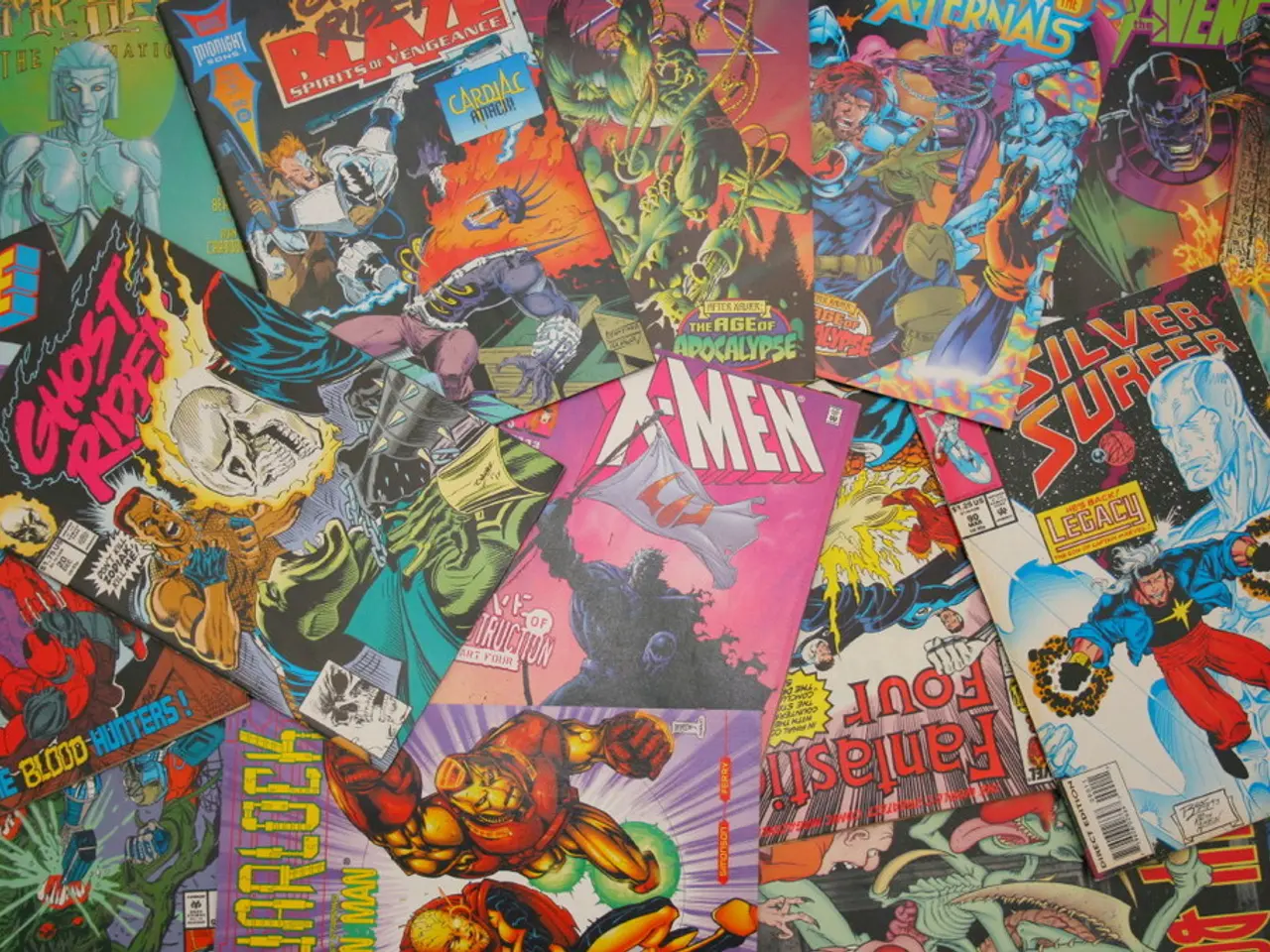Exploring the Captivating Realm of Comic Book Illustrations
In the world of comic books, art styles have undergone a remarkable transformation, reflecting changes in cultural context, printing technology, storytelling approaches, and audience expectations.
Tracing back to the early days, comic books such as The Adventures of Obadiah Oldbuck (1837) were simplistic in design. Panels were often arranged with text beneath rather than integrated word balloons, and printing techniques were rudimentary, relying on side-stitching and limited color. By the Golden Age (1938–1954), marked by the debut of Superman, comic art had become more dynamic and detailed, heavily influenced by newspaper comic strips. Clear panel layouts, bold lines, and bright colors to emphasize superheroic themes became the norm.
The Silver Age (approximately 1956–1969) saw a notable refinement in comic art styles. Artists emphasized cleaner lines, more consistent anatomy, and streamlined compositions suited to printing advances. Characters became more polished and visually distinct, reflecting a move toward science fiction and fantasy themes, along with a more optimistic and symbolic artistic tone compared to the stark wartime imagery of the Golden Age. The Silver Age also introduced new techniques and influences such as more sophisticated inking and color separation, creating a crisper and more vibrant look.
After the Silver Age, from the Bronze Age (1970–1985) onward, comic art styles diversified significantly. The Bronze Age introduced darker tones, more complex and realistic art to match stories with social relevance and mature themes, such as addiction and corruption. By the Modern Age (c. 1985–present), breakthroughs in storytelling and art — including graphic novels and independent comics — brought sophisticated, painterly, or experimental arts styles to mainstream audiences, with creators like those behind Watchmen and The Dark Knight Returns pushing the boundaries of the medium.
As technology continues to evolve, advancements in comic book art creation and consumption are likely. The rise of digital comics allows artists to reach global audiences through online platforms. Artists now have access to digital tools and techniques that allow for new creative possibilities. Renowned comic book artists include Jack Kirby, Stan Lee, Steve Ditko, Frank Miller, Alan Moore, and Neil Gaiman.
Comic book art has evolved significantly over time, from early newspaper comic strips to graphic novels and webcomics. It has had a significant impact on popular culture, influencing films, television, fashion, and art. Despite its humble origins, comic book art has become a platform for addressing social and political issues and has a dedicated fan base around the world. The future of comic book art looks bright, with continued innovation and exploration of new styles and techniques.
The evolution of comic book art has considerably intertwined with pop culture, creating a lasting impact on lifestyle, entertainment, and technology. For instance, groundbreaking comic books such as Watchmen and The Dark Knight Returns revolutionized the industry, influencing film, television, fashion, and even fine art.
Moreover, contemporary comic book artists leverage illustration technology to create dynamic, technologically advanced designs, expanding the genre's artistic boundaries and reaching global audiences through digital platforms.




